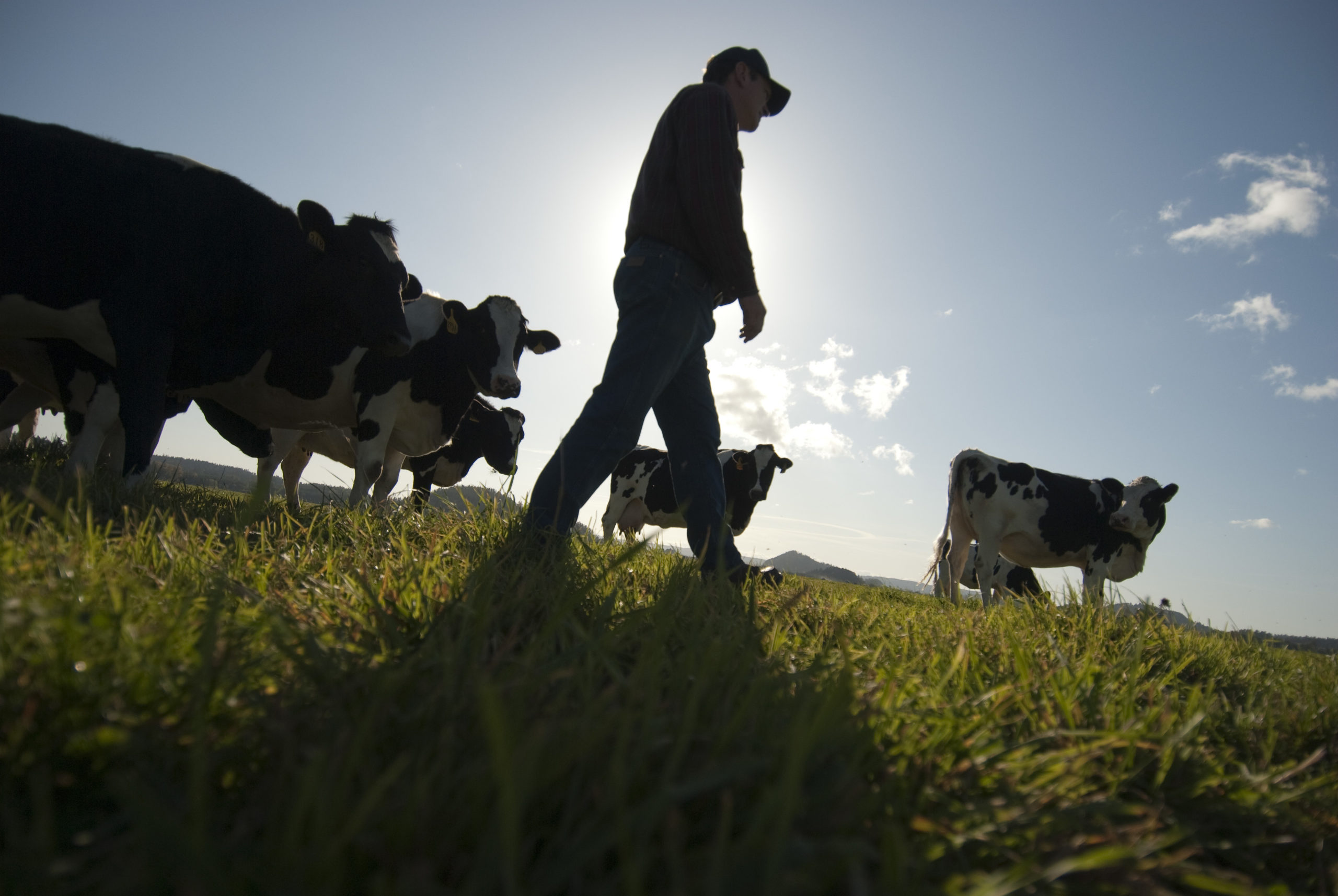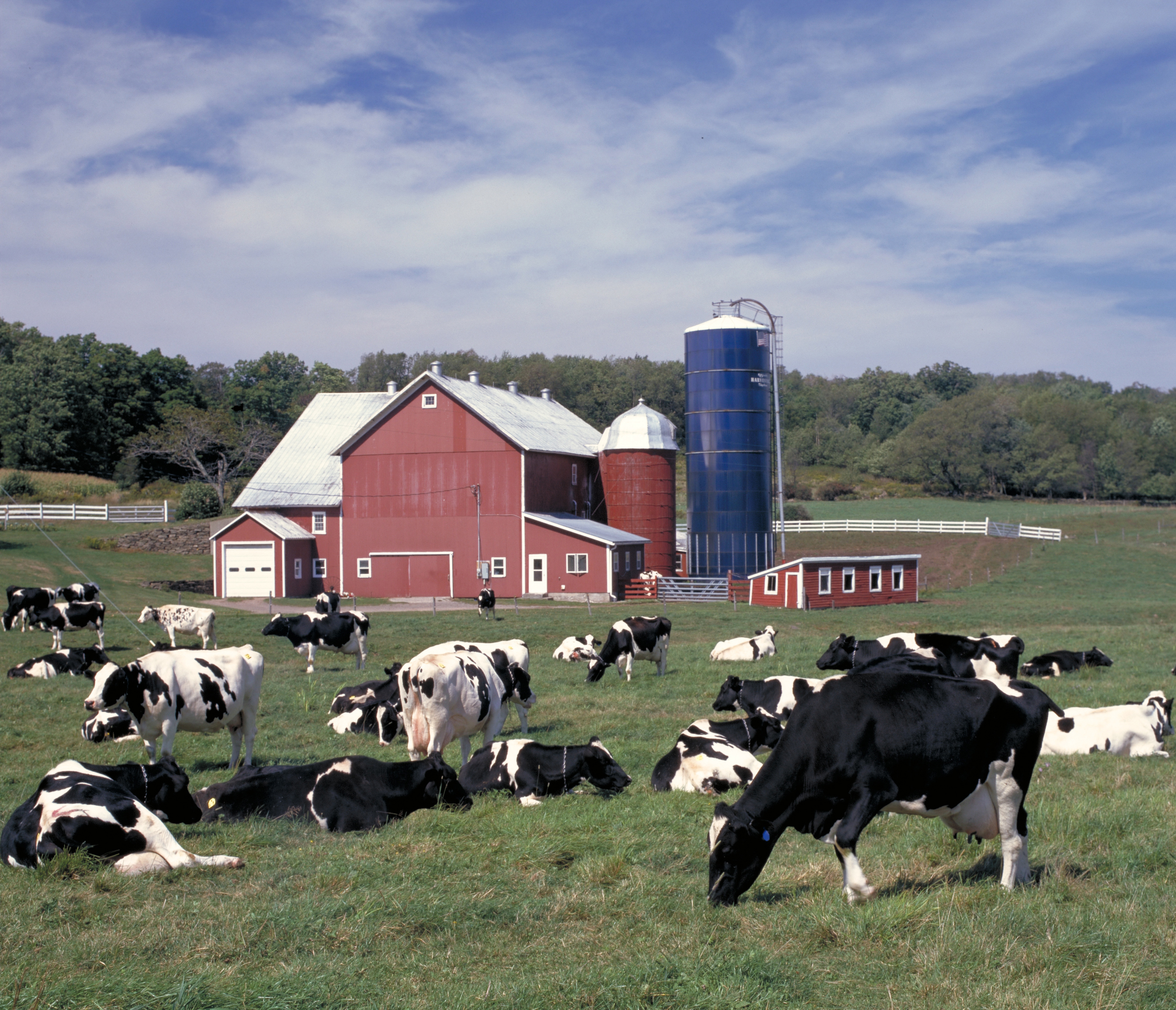Joe Loehr’s heart jumped “just a little” when he learned that fish species sensitive to nitrogen and phosphorus were thriving in the steam that courses through his Sheboygan, Wisconsin, dairy farm. The state Department of Natural Resources had surveyed fish in the stream, as part of its efforts to monitor nutrient loss from farmland in the area.
“I was thrilled,” said Loehr. “I don’t know what better proof there is that we’re not allowing these nutrients from our crops to escape into this stream that cuts right through the middle of 600 of our 1,000 acres.”
Loehr has reason to be thrilled. For the past 15 years, he and his brother have worked hard to follow a nutrient management plan on the 500-cow farm that’s been in their family for nearly 150 years. While the Loehrs are doing their part to keep the water clean, they’re also saving money on input costs. And in a region where excess nutrients cause many lakes to “green up” in the summer with toxic algae blooms, their efforts matter.
Nutrients leaving farm fields, through wind and water erosion, are a major contributing factor to water quality problems. Inefficient nutrient management practices cost farmers money, while also increasing agriculture’s contribution to greenhouse gas emissions. Nitrogen in manure and commercial fertlizer not used by living plants in a field will be lost to the environment in gases released into the air or carried by water into rivers and lakes.

Putting a nutrient management plan (NMP) into place, and following it, is the first step toward improving nutrient management on farms. Federal and state regulations require large dairies over a certain size (1,000 animal units) to develop these plans, but smaller dairies like Loehr’s also benefit from them. New technologies are also emerging to help dairy farmers manage manure and maximize the value of its nutrients, while also reducing their greenhouse gas emissions. The economics of these technologies, though, are still being worked out.
A NMP is essentially a living document that outlines how and when a farm should apply its various nutrient sources (e.g., manure, compost, commercial fertilizers) to ensure crop profitability and lessen the risk of nutrient loss. They are tailored to suit a farm’s unique characteristics—from herd size and land base to soil types and field conditions, to dairy setup and manure application techniques.
All NMPs help dairy farmers utilize manure the right way, to get the most value out of it as a source of nutrients and organic matter. Though at times it may seem like a daily headache, manure has tremendous value that should not be wasted.
“Manure is an excellent source of crop nutrients – not only nitrogen, phosphorous and potassium, but many micronutrients as well. For example, in my experience, it is very rare to see a micronutrient deficiency in a crop grown on a field with manure history,” says Karl Czymmek, agronomist with Dairy Management, Inc. “Another benefit of manure is the undigested feed particles and certain bedding sources help return carbon to the soil, supporting soil health.
When utilized properly, manure can save farmers money while also increasing the soil health of their fields. Loehr finds that to be true and notes “animal manure is our base fertilizer, and the other fertilizers are our supplements.”
Czymmek says, “Similarly, dairy farmers have told him having a nutrient management plan ‘has made them better farmers’ because they are more organized, able to deliver manure nutrients to where they are needed most and more closely matching nutrient application rates to crop needs.”
A 2012 study of 250 Wisconsin farms with nutrient management plans further backs that up. It found 69 percent of the farms saved money, with an average savings of approximately $18 per acre. Two-thirds of the farms decreased their nitrogen applications by an average of 54 pounds per acre, while half decreased phosphorus applications by an average of 32 pounds per acre. Importantly, the vast majority, 74 percent, saw no change in their corn yield while 18 percent cited an increased corn yield.
It’s All About Planning
Nutrient management planning starts with soil and manure testing, as well as a survey of field conditions and cropping systems. On the Loehrs’ farm, a consultant does annual soil testing, in a grid pattern, and combines the results with manure samples to understand the ratio of the nitrogen-phosphorus-potassium nutrients that are coming from the cows.
Next, the consultant creates a plan, following the 4Rs of nutrient management —a proven scientific approach that optimizes fertilizer efficiency through customized applications based on the right source of nutrients at the right rate and right time in the right place. This is done while factoring in the impact that field conditions (e.g., slope and proximity to water sources) and farming practices may have on soil erosion and water quality. Developed by the International Plant Nutrition Institute, Fertilizer Canada and The Fertilizer Institute, the 4R principals are most effective when combined with soil health practices, such as no-till farming, crop rotation and cover crops.

A dairy farm’s set up, size and manure storage and application techniques (whether dry, liquid or mixed with bedding) also factor in to the NMP process.
By going through this planning process, farmers learn what fields they should not spread manure on because they are close to surface water or drinking water wells, as well as the conditions under which they should not spread, such as when the ground is frozen or during predicted rainfall events. And by learning which fields require nutrients and at what rates, farmers can optimize their use of both on-farm nutrient sources and commercial fertilizers.
Another big value to nutrient management planning, according to Steve Richter, agriculture program director for The Nature Conservancy in Wisconsin, is a farmer will learn whether they have enough fields for spreading manure. If a farmer discovers they do not have sufficient land base, he or she will need to find additional fields, work with a neighbor, or develop storage.
Common Challenges & Solutions
Applying manure at the right rate can be tricky, according to John Jones, former director of the Foundation for Agronomic Research at The Fertilizer Institute, “because of the dynamic, heterogeneous makeup of manure.” Jones emphasizes the importance of knowing the amount of nitrogen, phosphorus and potassium in your manure.
Environmental issues can arise when farmers apply manure for crop use based solely off its nitrogen content. The phosphorus content of manure, compared to crop use is higher, which means phosphorus may be over applied and potentially lead to nutrient loss and algal blooms.
Logistics can also be constraining because it’s not always possible to apply manure exactly when the crop needs it. In those circumstances, Loehr falls back on commercial fertilizers. Weather and manure storage capacity can also be limiting factors, and often drive when manure is applied on farms that do not have a NMP. Farmers should ensure they have sufficient storage capacity to avoid spreading manure when their fields cannot absorb it.
Jones recommends subsurface injection of liquid manure, if possible, especially on sloping fields. He also recommends incorporating dry manure, or bedding in manure mixtures, into the soil. “There’s a balance between conservation tillage … and working [manure] lower within the soil profile to allow the soil to do its job and interact with those nutrients a little bit better,” he says, adding, “what really is an effective practice against nutrient losses is getting those nutrients to interact with soil.”
Loehr says his “creative cropping practices allow us a bigger window to apply [manure]” because his ground isn’t as saturated in the fall or spring as it is on other farms. By that, Loehr means he keeps a living root in the soil year-round, using wheat as a cover crop and other crops he harvests for livestock feed. Between the cover crops and manure, his soils are rich in organic matter and drain water well.
“The idea of leaving roots in the soil, every day of the year possible is just the easiest way to participate in the nutrient recycling that’s nature’s way. Plants and animals working together make that happen,” says Loehr.
Emerging Technologies
New technologies are also emerging to help dairy farmers manage manure and maximize the value of its nutrients, while also reducing a farm’s greenhouse gas emissions. The economics of these technologies, though, need to be worked out on each farm. Anaerobic digesters, which heat manure to produce methane and then capture it for use as a renewable fuel source, are increasingly being used on large dairy farms to manage greenhouse gas emissions from manure and enhance the mitigation potential for nutrient loss through nutrient separation equipment. Other technologies are also emerging that mitigate both GHG and nutrient loss potential of manure including flocculation (e.g., dissolved air flotation), membrane and evaporative systems.
Managing manure on the farm through storage and innovation minimizes the emissions from that manure and creates different manure-based products to be fed back to the soil,” says Karen Scanlon, EVP, environmental stewardship, at the Innovation Center for U.S. Dairy. “It’s part of the solution that dairy is offering, sequestering carbon, minimizing emissions, improving soil health, improving water use efficiency on farms, and protecting water quality.”
“While these technologies often aren’t affordable to smaller farm operations, the industry is working collaboratively with partners to explore possible means to make the economics more favorable,” according to Scanlon. “We see these economic opportunities as a key part of how we can continue to support accelerated action to reduce the environmental impacts and improve the environmental benefits generated on farms.”
In the meantime, for farmers who don’t yet have a NMP, Camp advises reaching out to a farm that currently has a plan to learn more about it. Milk cooperative representatives, certified crop advisors, and the soil and water office can offer more details and perhaps even cost-share for developing the NMP.
Farmers like Loehr are happy to share their learnings. “It’s really inspiring,” he says, “to just keep adding on to the practices and constantly learning, and not be afraid to fail.”




Join the Discussion